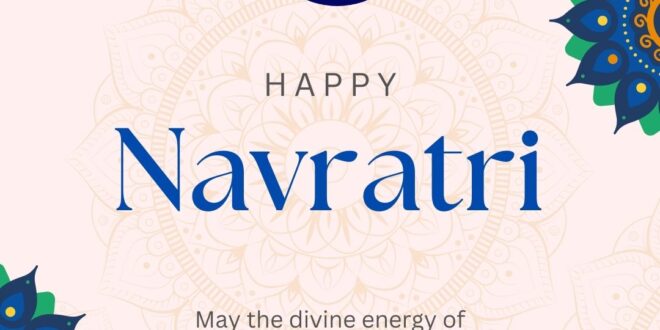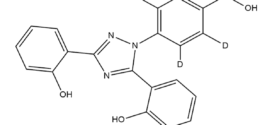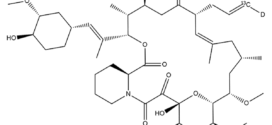Navratri, or the Divine Nine Nights, is a time of deep rest and rejuvenation. Each day is dedicated to one of the nine forms of the Mother Divine. The final day, the 10th day, is called Vijaydashami, the day popularly celebrated as the day of the victory of good over evil but it is really the sattva winning over the other gunas, the one consciousness expressing itself.
The word ratri means that which gives you deep rest or relief from three things, the three tapas. Tapas means the three types of fire or the three botherations – the physical, the subtle and the causal. The three types of botherations: Adi Bhautik – the worldly botheration, Adi Daivik – botherations on the level of the cosmic angels or devas, and then botherations of the soul. Navratri gives a deep rest that can relieve you from all these three botherations, so it’s a time of prayer and rejuvenation.
A Time for Deep Rest: The Journey to the Source
These nine days of celebrations are meant to take one inward and upward – it’s an inward and an upward journey. During these auspicious days, make sure that small things do not distract you from your goal. Our mind is so tricky that it just pulls us away from our goal and gets us stuck in small things. Just someone sneezing next to us or snoring near us is enough to pull us off track. When we become aware of our mind which is getting into the negative cycle, we become clever. It’s then that we can win over the small chattering mind. Therefore, these nine nights are meant for us to rest. Even if any conflicts arise, keep them all aside and go back to your innocence.
Day 1 – Shailaputri: The first aspect of Durga
Shailaputri is born out of Shaila, which means that which is extraordinary, One who is born out of the peak of an experience is Shailaputri.
Day 2 – Brahmacharini: the second aspect
Brahma means infinity, and Brahmacharini is the one who moves in infinity.
Another meaning is the virgin aspect of Mother Divine- this energy is virgin, it’s like the sun rays, though it is old, yet it is fresh and new. The newness is depicted in the second form of Durga.
Day 3 – Chandraghanta: the third aspect
Chandraghanta means Chandra, the moon or related to the mind, that which charms the mind, that which is the embodiment of beauty. Wherever anything appears beautiful to you, it is because of the Mother Divine’s energy there.
Day 4 Kushmanda: the fourth name
Kushmanda means a ball of energy, of prana. Whenever you experience immense energy or prana, know that this is one aspect of Durga, the Mother Divine.
Day 5 – Skandamata: the fifth aspect
Skandamata is the motherly energy, she is like your own mother. Skandamata – the mother of all the 6 systems, the 6 schools of knowledge – Nyaya, Vaisheshika, Sankhya, Yoga, Vedanta and Uttara Mimamsa; 6 angas or limbs of the Vedas, called the Shadangas. These include: Jyotish or astrology, music and then many other disciplines – the meters, phonetics, 64 different disciplines of art and science, of knowledge. Skandamata is the mother of all this wisdom.
Day 6 – Katyayani: the sixth aspect
Katyayani is that which is born out of the seer or witness aspect of consciousness; that consciousness which has the intuitive ability.
Day 7 – Kaalratri: the seventh aspect
Kaalratri is the deep dark energy, the dark matter, that houses infinite universe, that brings solace to every soul. If you feel happy and comfortable, it is the blessing of the ratri. Kaalratri is that aspect of Mother Divine which is beyond the universe, yet brings solace to every heart and soul.
Day 8 – MahaGauri: the eight aspect
MahaGauri is that which is so beautiful, that gives momentum and ultimate freedom in life. That brings you ultimate liberation.
Day 9 – Siddhidhaatri: the ninth aspect
Siddhidhaatri brings perfection in life and siddhis., Her blessings bring many miracles in life. What we think is impossible, she makes it possible.
And on the last day, the 10th day, Vijaydashami – you end the Navaratri with celebrations, emotionally charged, spiritually charged, and intellectually uplifted.
Key Aspects of Navratri’s Significance
- Victory of Good Over Evil: The core significance of Navratri lies in the triumph of virtue and righteousness (Dharma) over evil and malevolence, as embodied by Goddess Durga’s victory over the demon Mahishasura.
- The Divine Feminine (Shakti): The festival highlights the concept of the “Devi,” or the divine feminine power, the creative force of the universe that brings life and energy to all.
- Spiritual Journey and Transformation: Navratri represents the soul’s journey towards spiritual enlightenment, encouraging introspection and the overcoming of inner demons.
- Harvest and Prosperity: It is also considered a harvest festival, marking the end of the monsoon and the beginning of the agricultural season, promoting fertility and abundance.
- Cultural Unity: The festival celebrates India’s cultural diversity, with various regions observing their own unique rituals and traditions, such as the Doll exhibition (Kolu) in South India.
- Auspiciousness and Purity: Each of the nine nights is dedicated to a different form of the Goddess, with specific colors, rituals, and prayers associated with each day.
Cultural Practices and Celebrations
- Worship of Durga’s Forms: Devotees worship Maa Durga and her nine different manifestations over the nine days.
- Fasting and Rituals: Many devotees observe fasts, eating only fruits and other allowed foods, to cleanse the body and soul.
- Traditional Dances: The festival is celebrated with grand festivities, including traditional dances like the lively Garba and Dandiya Raas, particularly in Gujarat.
- Goddess Durga’s Energy: People wear the auspicious color associated with each day to connect with the goddess’s divine energy, inviting blessings and positive energy.
 VIVAN Life Sciences Blog
VIVAN Life Sciences Blog







